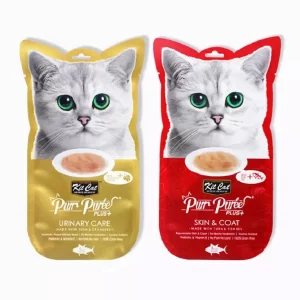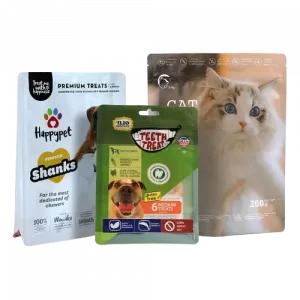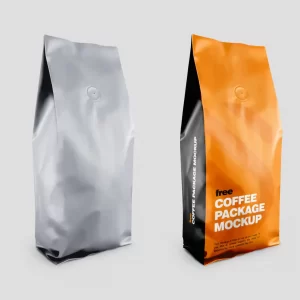WeChat:
+86-189 7322 3283
What’s app::
+86-13630093256
Content Menu
● Understanding Consumer Needs
● Benefits of Different Pet Food Bag Sizes
>> Small Pet Food Pouches (2-5 lbs)
>> Medium-Size Pet Food Packaging Options (10-15 lbs)
>> Extra-Large Pouches (30+ lbs)
● Types of Pet Food Packaging Bags
● Materials for Pet Food Packaging Bags
>> Plastic Packaging Materials
>> Composite Structure Packaging
>> Specific Material Combinations
● Key Considerations for Choosing the Right Size
>> Matching Bag Size to Food Amount
>> Compliance with Food Safety Standards
● Consumer Behavior and Packaging Trends
● Environmental Considerations and Sustainability
● Innovations in Packaging Technology
● Packaging Design and Branding Impact
● FAQ
>> 1. How do I choose the right packaging materials for my pet food products?
>> 2. What are the most common materials used for pet food packaging bags?
>> 3. How important is moisture protection in pet food packaging?
>> 4. What role does bag size play in maintaining the freshness of pet food?
>> 5. Are resealable features necessary for pet food packaging bags?
Choosing the right size pet food packaging bag is essential for maintaining the freshness, quality, and appeal of your product. The correct packaging not only preserves the nutritional value of the food but also enhances brand image and consumer convenience. This comprehensive guide explores the various factors to consider when selecting the appropriate packaging size, including understanding consumer needs, different bag sizes, material choices, packaging trends, environmental considerations, innovations, and frequently asked questions.

Understanding what customers want is the first step in creating effective pet food packaging. Pet owners typically aim to buy enough dry food or kibble to last 1-2 months, ensuring optimal freshness after opening. This means that the choice of bag size is often based on the size of the pet.
– Small Breeds: A small dog may consume 4-6 pounds of food over two months.
– Medium Breeds: A medium dog might eat 12-18 pounds in the same period.
– Large Breeds: Larger breeds will require significantly more food, influencing the need for larger packaging sizes.
However, kibble isn’t the only type of pet food available, and there are numerous other reasons why pet owners might prefer one size over another.
Small pouches offer several advantages that can drive business growth.
– Right-Sized Portions for Smaller Pups: Ideal for small dog breeds, ensuring that food remains fresh and doesn’t spoil before it is consumed.
– Product Testing: Perfect for customers who want to sample new products without committing to a large quantity.
– Travel-Friendly: Convenient portability for pet owners on the go, making it easier to manage feeding schedules while traveling.
– Urban Living: Space-conscious solutions for apartment dwellers with limited storage.
– Subscription Boxes: Great portion sizes for pet subscription box services, offering variety without excess.
– Treats: Suitable for storing occasional dog treats, keeping them fresh and easily accessible.
Medium-sized bags strike a balance between convenience and practicality.
– Medium Dogs: Matches the dry food needs for medium-sized dogs over 1-2 months.
– Multiple Small Dogs: Stores enough food for two small dogs during the same period, making it a cost-effective option for multi-pet households.
– Storage Smart: Fits standard kitchen storage spaces, ensuring that the bag doesn’t take up too much room.
– Value Balance: Offers a good volume of food without requiring a bulk commitment, reducing the risk of spoilage.
– Super Snacks: Keeps larger portions of treats and freeze-dried food fresh, providing convenience for pet owners who like to stock up.
Large pouches are cost-effective for owners of larger pets who prefer to buy food in bulk.
– Cost-Effective: Buying in bulk reduces the frequency of purchases and often provides a lower cost per pound.
– Ideal for Large Breeds: Suitable for larger breeds with higher food consumption rates, ensuring they have an adequate supply.
– Reduced Shopping Frequency: Less frequent trips to the store save time and effort.
Extra-large pouches are designed for those with multiple pets or very large breeds.
– Economical for Multi-Pet Households: The most economical option for households with multiple pets, reducing overall food costs.
– Sustained Supply: Ensures a sustained supply of food, minimizing the risk of running out.
– Requires Adequate Storage: Requires ample storage space, which may not be suitable for all pet owners.
Stand-up pouches are a popular choice for packaging small quantities of pet food and are known for their anti-spillage properties.
– Economical: Cost-effective packaging option.
– Anti-Spillage: Protects products from spilling during transit and display.
– Visibility: Enhances product visibility on store shelves.
Quad seal bags are suitable for packaging large amounts of product, providing ample space for branding and advertisement.
– Large Volume: Ideal for packaging large quantities of pet food.
– Branding Space: Provides ample space for branding and advertising.
– Durability: Offers enhanced durability due to the quad seal design.
Eight-side seal bags are cherished for their durability and distinctive appeal, offering unparalleled protection and making your product stand out.
– Durability: Provides excellent protection for the pet food.
– Distinctive Appeal: Enhances the product’s visual appeal.
– Consumer Satisfaction: Meets consumer expectations through high-quality packaging.
The choice of material depends on factors like the type of pet food (dry, wet, or treats), required barrier properties (moisture, oxygen, light), shelf life, transportation conditions, sustainability goals, and budget constraints.
Several types of plastic packaging materials meet food and food packaging requirements.
– PA/PE or PA/RCPP: Suitable for general use, offering good strength and puncture resistance.
– PET/PE or PET/RCPP: Provides good sealing and moisture resistance.
– PET/PA/PE: Offers a combination of strength and barrier properties.
– PET/AL/RCPP: Provides excellent barrier protection against moisture, oxygen, and light.
– PA/AL/RCPP: Offers superior barrier properties for extended shelf life.
– PET/PA/AL/RCPP: Combines the benefits of PET, PA, and aluminum for maximum protection.
– PET/PA/VMCPP/LDPE: Suitable for heat-seal packaging with good moisture resistance and light protection.
Mono-material packaging is made from a single type of material such as polyethylene (PE) or polypropylene (PP).
– Recyclability: Easier to recycle since the material is homogeneous and doesn’t require separation and sorting.
– Sustainability: Supports sustainability goals by reducing the complexity of recycling.
Composite structure packaging is composed of multiple layers of different types of materials such as polyethylene terephthalate (PET)/polyethylene (PE)/aluminum foil (AL).
– Enhanced Protection: Designed with different material layers to provide specific performance and functionalities such as moisture resistance, oxygen barrier, and light protection.
– Complexity in Recycling: May add complexity to recycling and reuse due to the diversity of materials involved.

– PET/PE: A combination of polyethylene terephthalate (PET) film and polyethylene (PE) film, typically used for pet food packaging, providing good sealing and moisture resistance.
– PET/AL/PE: A three-layer composite structure consisting of PET film, aluminum foil (AL), and PE film, often used for high-demand pet food packaging such as dry food and biscuits, with moisture resistance, oxygen barrier, and light protection properties.
– NY/PE: A combination of nylon (NY) film and polyethylene (PE) film, suitable for frozen pet food packaging, popular for its excellent low-temperature performance.
– PA/PE: A combination of polyamide (PA) film and polyethylene (PE) film, commonly used for pet food bags requiring high strength and tear resistance.
– PET/MPET/PE: A three-layer structure comprising PET film, metallized polyester (MPET) film, and PE film, suitable for heat-seal packaging, offering good moisture resistance and light protection.
Choosing the right bag size is essential. A bag that is too small will not hold enough food, while a bag that is too large may cause the food to spoil before it is consumed. Choose a bag size that matches your pet’s food consumption rate.
Consider the storage space available in your home. Make sure the bag size fits your designated storage area to keep it organized and easily accessible.
Ensure the bag offers adequate moisture protection to keep food dry and fresh. UV rays can reduce the nutritional quality of pet food so choose bags with UV protection to protect food from harmful light.
If the pet food bag contains more than a single serving size, opt for a re-usable pet food bag. The latest styles of pet food packaging feature zippers, sliders, Velcro tapes, and other closures for resealing.
Ensure that the packaging bags comply with relevant food safety regulations and standards. Look for certifications such as FDA approval or ISO certification.
In recent years, consumer behavior has shifted significantly towards convenience, sustainability, and customization in pet food packaging. Pet owners are increasingly looking for packaging that not only preserves the quality of the food but also aligns with their values and lifestyle. For example, many consumers prefer packaging that is easy to open and reseal, lightweight for easy handling, and visually appealing with clear labeling and branding.
Customization is another growing trend, with brands offering personalized packaging sizes and designs to cater to specific pet needs and owner preferences. Subscription services have also influenced packaging trends, encouraging smaller, more frequent packaging options that reduce waste and improve freshness.
Sustainability has become a critical factor in packaging decisions. Many pet food companies are now prioritizing eco-friendly materials and designs to reduce their environmental footprint. This includes using recyclable or biodegradable materials, reducing plastic usage, and optimizing packaging size to minimize waste.
Consumers are more informed and concerned about the environmental impact of their purchases, which has led to increased demand for sustainable packaging solutions. Brands that adopt green packaging practices often gain a competitive edge and build stronger customer loyalty.
Advancements in packaging technology have introduced new features that enhance the functionality and appeal of pet food bags. These include smart packaging with QR codes that provide product information and traceability, antimicrobial coatings to extend shelf life, and improved barrier materials that better protect against moisture, oxygen, and light.
Some companies are experimenting with reusable and refillable packaging systems to further reduce waste. These innovations not only improve the user experience but also contribute to sustainability goals.
The design and branding of pet food packaging play a crucial role in attracting customers and conveying the product’s value. Effective packaging design includes clear labeling, attractive graphics, and informative content that highlights the benefits of the pet food. Brands often use colors and images that resonate with pet owners, such as happy pets or natural ingredients, to create an emotional connection.
Moreover, packaging that communicates transparency about ingredients, sourcing, and manufacturing processes can build trust and encourage repeat purchases. Innovative designs that incorporate user-friendly features like easy-pour spouts or handles also enhance customer satisfaction.
Selecting the right size pet food packaging bag is a multifaceted decision that requires careful consideration of consumer needs, material properties, packaging trends, environmental impact, and storage conditions. By understanding the benefits and drawbacks of different bag sizes and materials, you can ensure that your pet food remains fresh, appealing, and safe for consumption. Proper packaging not only protects the product but also enhances your brand’s reputation and fosters customer loyalty.
Are you ready to elevate your pet food packaging? Contact us today to explore our wide range of customizable and high-quality packaging solutions designed to meet your specific needs. Let us help you make the perfect choice for your pet food products!

The choice of packaging material depends on factors like the type of pet food (dry, wet, or treats), required barrier properties (moisture, oxygen, light), shelf life, transportation conditions, sustainability goals, and budget constraints.
Common materials include PA/PE, PET/PE, PET/AL/PE, NY/PE, and PET/MPET/PE. The choice depends on the required barrier properties, strength, and temperature resistance.
Moisture protection is critical. Moisture can lead to mold and spoilage, compromising the quality and safety of the pet food. Ensure the packaging offers adequate moisture protection to keep the food dry and fresh.
Choosing the right bag size ensures that the food is consumed before it spoils. A bag that is too large may expose the food to air and moisture for extended periods, reducing its freshness.
Yes, if the bag contains more than a single serving, resealable features like zippers, sliders, or Velcro tapes are essential to maintain freshness and prevent spoilage after opening.
Hot Tags: Pet Food Packaging Bag, Custom Pet Food Bags, Resealable Pet Food Bags, Pet Treat Packaging, Dog Food Packaging Bag, Cat Food Packaging Bag, Flexible Pet Food Pouch, Eco-Friendly Pet Packaging, Stand Up Pet Food Bags, Printed Pet Food Bags